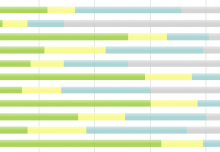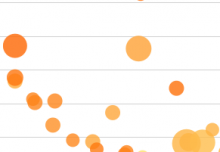This post is the seventh in a series discussing a machine learning use case for a mobile app provider. The link to the full case study can be found at the end of the post. The first post can be found at https://www.inetsoft.com/blog/machine-learning-concepts-defining-churn-predictive-metrics/
Unsupervised learning, unlike supervised learning, asks machine learning to find patterns on its own. In this method, no human provides examples to be used as a base to learn from. For business applications, two type of unsupervised learning are often seen: clustering and association.
Clustering classifies observations into categories called clusters. But unlike classification, there are no predefined categories. Machine learning concepts try to put similar observations into a cluster. For example, you might want to see how many clusters your customers belong to. The hope is that there will be things that are in common with people in a cluster so you can market to them with a message that is specific and meaningful in one cluster differently from how you do so for another cluster.
You can experiment to see how many clusters make most sense for the data. Judgment is necessary to determine whether the clusters do define a group of people with meaningful differences from other clusters.. Common clustering algorithms include:
- K-means
- Gaussian mixture
- Power iteration clustering (PIC)
- Latent Dirichlet allocation (LDA)
- Bisecting k-means
- Streaming k-means
Association finds things that are related. You may have heard of Frequent Pattern Mining, Market Basket Analysis and so on. These are all refer to association type of algorithms. In machine learning jargon, this is most often called Collaborative Filtering. This is because a user’s potential interest can be found by examining other users’ interests who already share some common interest with the target user.
An example is product recommendation where products that are frequently bought together are associated. Note that association learns from past sales data to find the relationship. But this past data set is simply raw collected sales data, not something that a human has scored or assigned. Algorithms include:
- Memory based collaborative filtering
- Model based collaborative filtering
- Association Rules
The findings that these machine discovery algorithms produce can really surprise you, producing clusters or associates that would never have come to mind otherwise.
The full case study can be found at https://insidebigdata.com/2017/04/14/predicting-mobile-app-user-churn-training-scaling-machine-learning-model/
The next post in the series is at: https://www.inetsoft.com/blog/advanced-machine-learning-algorithms-deep-learning-dimensionality-reduction/







